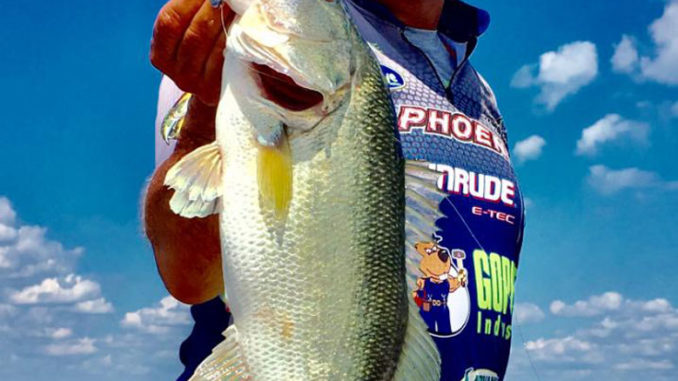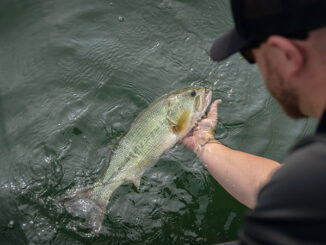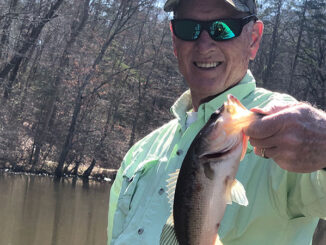
Don’t be afraid to look for bass in deep water
An awful lot of bass fishermen, including me, like to fish shallow, even during the peak of the summer heat. There’s a good topwater bite early and late, and face it, some bass are always shallow; they live there year-round. But they don’t make up a big percentage of the population, and with all of us looking for them in July, they get hammered on almost every day.
Those of us who actually leave the shallows to fish usually don’t go deep enough. We stop and fish that 10- to 25-foot range, the mid-depths. I believe a lot of bass spend the summer in much deeper, cooler water, maybe as deep as 30 to 40 feet. And those bass typically don’t get a lot of pressure because nobody is targeting them.
I bring this up because I believe bass live out there because baitfish live out there. I think that at least half of the bass in any lake that has blueback herring will be out there. Lakes that have just shad will probably have 30 to 40 percent of the bass out in that deep water. Threadfin shad will come up to the surface early and late — so you get some topwater action — but blueback herring never come up, so you’ll have to use your electronics to find them.
The thermocline is a concern, but it changes so much depending on weather, water flow and water quality, that I’m more concerned with using my electronics to find baitfish and bass in this deep water. Where you find them will be their comfort zone.
Thirty years ago, with the electronics we had, we’d have to find the thermocline and fish around it. Now, with the new technology, I can use my Humminbird Helex with Mag Imaging to find baitfish and bass out that deep. You can usually find something they’re relating to, whether it’s rocks or wood or just contour changes; no vegetation I know of grows that deep. I’ve only been a host on the Bassmaster Live TV show for a few months, but I’ve already seen Brandon Palaniuk win a tournament and Brent Ehrler finish second catching fish that they found with their Humminbird electronics.
Now, finding them may not be too hard, but catching them is a different story. A lot of times, the baitfish and bass are suspended. They may be sitting 20 to 25 feet deep over 25 to 40 feet of water. That’s a big reason they aren’t getting pressured very much. I have a handful of baits I tie on when I’m going to fish deep water like this. I’ll tie on the deepest-diving crankbait I’ve got — in my case, a Rapala DT-20. I might use a Rapala jerkbait. I like a Storm 360 swimbait, and I will also use a drop-shot rig with a Yamamoto cut-tail worm and fish vertically.
With the crankbait and jerkbait, what I’m counting on is that suspended fish are almost always looking up, and if you can get them interested, they’ll often come up 5 or 10 feet to hit a bait. If I can get a DT-20 down 20 feet, a fish that’s suspended at 25 or 30 feet might come up that far to get it. If I’m fishing a jerkbait on a 7-foot rod, with 10-pound XPS fluorocarbon, I can make casts long enough to get that bait down 15 feet, and a bass may come up that far to hit it; they’ll certainly come up 5 or 10 feet in the spring to hit a jerkbait.
I really like to fish the Storm swimbait in the hottest part of the day. I’ll cast it out, count it down to the depth I need to fish, and retrieve it slowly through the bait and fish. I like to fish it on no more than a 1/2-ounce jighead, but the bait comes pre-rigged with either a 1/2- or 3/4-ounce jighead so you can fish it right out of the package.
Getting one to bite is the hard part, but if you catch one fish, man, it’s on. You can expect to catch several more. That first fish will usually get the whole school excited. Just keep casting to that same spot, because you can really load up on a place when you can fool one into biting.
Because the fish down that deep are feeding only on shad or herring, I’m going to be fishing baits in those colors. No need for crawfish colors or some of your chartreuses.
It takes a different mindset to fish this deep, but if you can swing it, the rewards can be great.





Be the first to comment